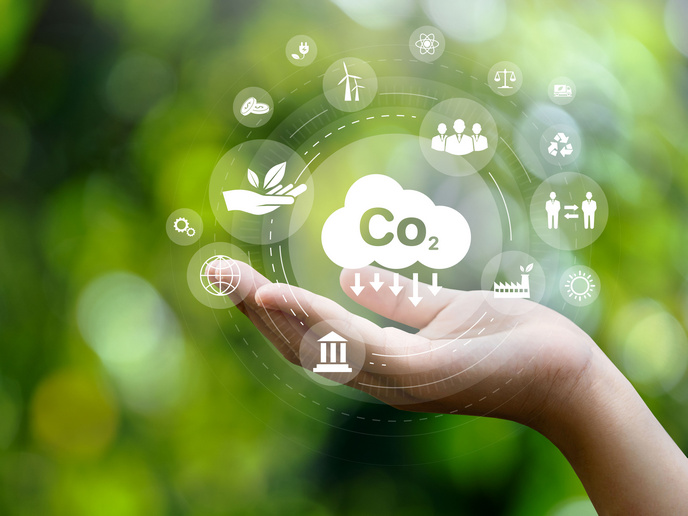Converting biogenic carbon dioxide to added-value chemicals
The chemical industry relies heavily on fossil feedstocks to produce plastics, fuels and everyday materials, emitting significant amounts of greenhouse gases. There is a need not only to reduce emissions but also to rethink carbon as a resource.
Turning carbon dioxide into real products
Instead of treating carbon dioxide (CO2) as waste, researchers are exploring ways to transform it into valuable chemicals that can replace fossil-derived products. Harnessing biogenic CO2 released from biomass management or biological processes offers an especially promising and circular route, as it avoids adding new carbon to the atmosphere by reintroducing it into virtuous value chains, thus loosening their dependence on fossil sources. The EU-funded CO2SMOS(opens in new window) project was launched to advance this vision by converting CO2 into added-value compounds that can be integrated into bio-based materials. A total of seven CO2-derived compounds were generated including PHAs(opens in new window) and carbonates that were successfully valorised into biomaterials such as compostable packaging films, molded items and 3D printing filaments. “Our industrial end users validated that CO2-derived chemicals can integrate into real products, opening new market opportunities,” states project coordinator Nicolas Martin Sanchez.
Methods for turning CO2 into useful chemicals
The CO2SMOS team utilised a mix of biological and chemical approaches. By combining biology, chemistry and electrochemistry, they created a toolbox of solutions showing that CO2 can feed into many industrial value chains In one method, anaerobic microorganisms are used to consume CO2 and transform it into building blocks such as acids and alcohols, which can then be used as building blocks to produce plastics and polymers. Other methods utilise catalysts to guide the chemical transformation of CO2 into compounds widely used in packaging. The project also explored cutting-edge electrocatalytic approaches, where CO2 is combined with renewable electricity to create versatile chemical intermediates. In parallel, thermocatalytic processes were employed to turn CO2 and natural oils into carbonates, which are important building blocks for sustainable plastics and coatings. This mix of complementary technologies shows that multiple industrial pathways can benefit from CO2 as a raw material.
Regulatory and economic challenges
Technically, CO2SMOS proved that CO2 can be a feedstock for materials with excellent performance and potentially carbon-negative footprints. By demonstrating bio-based plastics under industrial conditions, the project validated their integration into existing value chains. However, according to Sanchez: “Regulatory frameworks are still biased towards biofuels rather than chemicals. Expanding policy support(opens in new window) for CO2-derived materials will be key to accelerating market uptake.” Furthermore, CO2-based processes remain more expensive than fossil routes, mainly due to the cost of green hydrogen, which is essential for many conversions.
Industrial uptake and lasting impact
The project has already achieved pilot-scale validation particularly for fermentation-based technologies. Further scale-up and detailed techno-economic assessments will be required before full industrial deployment. Other catalytic innovations are at an earlier stage but have strong long-term potential. By proving that biogenic CO2 can be transformed into plastics and chemicals with industrial applications, CO2SMOS contributes to a circular, carbon-neutral economy. The generated methods will reduce dependance on fossil feedstocks and also position CO2 as a sustainable raw material, opening new pathways for bio-based industries of the future.



